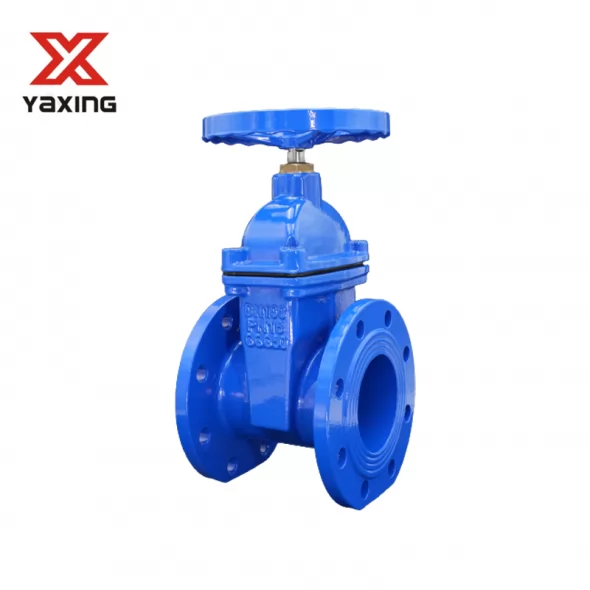+86 186 3170 8948
+86 186 3170 8948
Knowledge
Feb. 11, 2025
A cast iron gate valve is a type of linear motion valve designed to fully open or completely block fluid flow in a pipeline. As the name suggests, its primary components are manufactured from cast iron, a durable and corrosion-resistant material ideal for industrial applications. These valves feature a flat or wedge-shaped gate (disc) that moves perpendicular to the flow direction, creating a tight seal when closed. Commonly used in water supply systems, wastewater treatment plants, and industrial piping networks, cast iron gate valves excel in high-pressure environments where reliable shut-off is critical.

Understanding its structure is essential for proper operation and maintenance:
Body: The main housing containing internal components, cast as a single piece for strength.
Bonnet: A removable cover bolted to the body, providing access for maintenance.
Gate (Disc): A vertical plate that ascends/descends to regulate flow; wedge-shaped designs enhance sealing.
Stem: A threaded rod connecting the handwheel to the gate, transmitting rotational force into linear motion.
Handwheel/Actuator: Manual handwheel or automated actuator (electric/pneumatic) for valve operation.
Gland Packing: Sealing material (e.g., graphite) around the stem to prevent leakage.
Seat: Machined surfaces where the gate contacts the body to form a leak-proof closure.
The valve operates through straightforward mechanical action:
Opening: Rotating the handwheel counterclockwise raises the stem, lifting the gate completely out of the flow path. This creates an unobstructed channel, minimizing pressure drop.
Closing: Turning the handwheel clockwise drives the gate downward until it presses firmly against the valve seats, blocking fluid passage.
Sealing: The wedge-shaped gate design ensures uniform pressure distribution on the seats, enhancing sealing efficiency under high-pressure conditions.
Gate valves are designed for full-open or full-close service only and should not be used for flow throttling, as partial opening can cause vibration and seat erosion.
Their robustness makes them suitable for diverse industries:
Water & Wastewater Systems: Municipal water distribution, sewage treatment plants.
Fire Protection: Installed in fire hydrant lines for emergency isolation.
Industrial Pipelines: Oil, gas, and chemical processing (non-corrosive fluids).
HVAC Systems: Steam and hot water circulation in heating networks.
Irrigation: Controlling water flow in agricultural channels.
Note: Cast iron valves are not recommended for highly corrosive fluids (e.g., acids) or extreme temperatures (>260°C/500°F).
| Pros | Cons |
|---|---|
| Simple design, easy maintenance | Heavy weight complicates installation |
| Tight sealing with low leakage | Slow operation; not for rapid cycling |
| Low fluid resistance when fully open | Vulnerable to corrosion in acidic/alkaline environments |
| Cost-effective for large diameters | Prone to seat/gate damage if misused for throttling |
| Durable in high-pressure systems | Potential for jamming due to sediment buildup |
Causes: Worn gland packing, improper tightening.
Fix: Replace packing material and adjust gland bolts evenly.
Causes: Corroded stem, debris accumulation, over-tightened packing.
Fix: Lubricate stem with grease, clean internal deposits, or loosen packing nut.
Causes: Scale/sludge buildup, thermal expansion.
Fix: Gently tap valve body with a mallet or perform ultrasonic cleaning.
Causes: Frequent partial opening, abrasive particles in fluid.
Fix: Replace seats and gate; install a strainer upstream.
Causes: Exposure to aggressive chemicals.
Fix: Replace valve with corrosion-resistant materials (e.g., stainless steel).
Cast iron gate valves remain indispensable in industries prioritizing reliability and cost-efficiency. While their weight and corrosion limitations require careful consideration, proper installation and routine maintenance—such as periodic lubrication and seal inspections—can significantly extend service life. For applications demanding frequent operation or precise flow control, alternative valves (e.g., ball valves) may be more appropriate. Always consult engineering specifications and fluid compatibility charts before valve selection.
Yaxing is a premier manufacturer specializing in cast iron gate valves, offering an extensive range of models tailored to meet the diverse demands of industrial applications. Our product portfolio includes the following models:
Resilient Seated Gate Valve BS5163
Rising Stem Resilient Seated Gate Valve BS5163
Resilient Seated Gate Valve DIN3352 F4/F5
Rising Stem Resilient Seated Gate Valve DIN3352 F4/F5
Resilient Seated Gate Valve SABS 664/665
Resilient Seated Gate Valve AWWA C509
Socket End Resilient Seated Gate Valve
Each valve is engineered for durability, precision, and optimal performance under high-pressure conditions. Whether you require a manual or automated operation, our cast iron gate valves are designed to deliver reliable shut-off and long-term operational efficiency. Moreover, we offer customization options to ensure that each valve perfectly aligns with your specific requirements and industry standards. With Yaxing's commitment to quality and innovation, you can trust our products to provide exceptional service and performance in even the most demanding environments.
Next post
Related Products
Botou Yaxing Fluid Equipment Co., Ltd. specializes in providing design, development, and manufacturing services for the water valve industry. We produce high-quality valve products.
+86 186 3170 8948
No.4 Road Botou Industrial Zone, Cangzhou City Hebei Province, China
Get Free Sample
 Privacy Policy
Privacy Policy